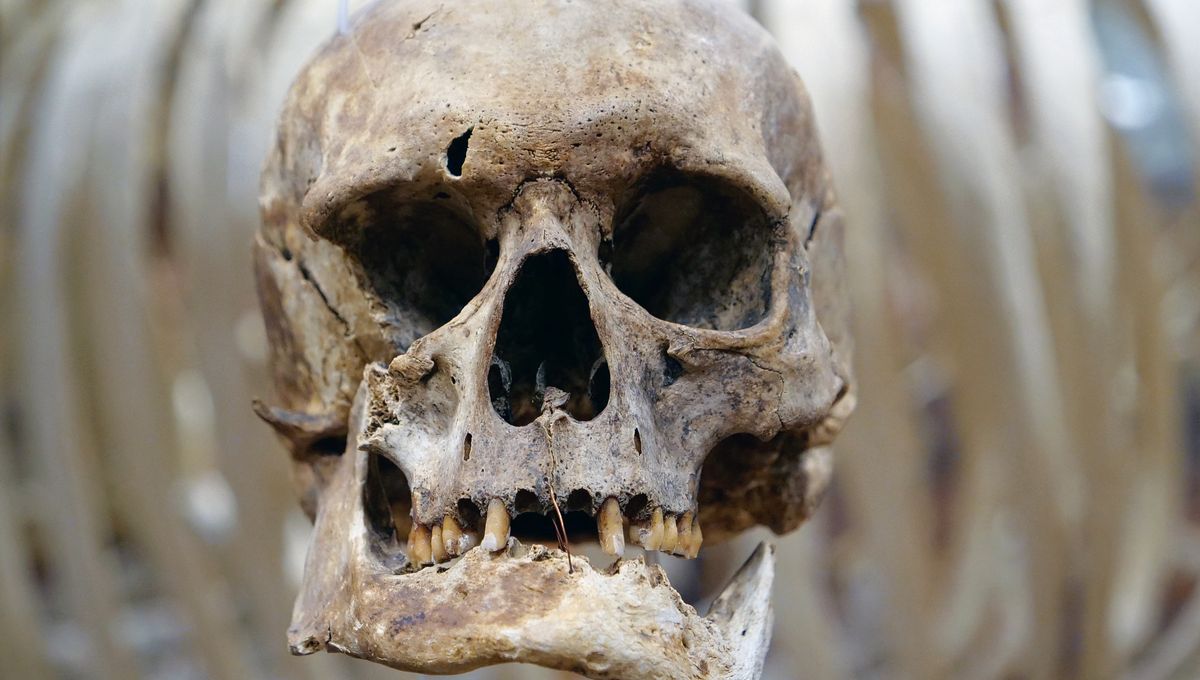
Nail-biting and nose-picking have probably been around since our ancient ancestors walked the Earth, but these habits don’t leave much of a physical trace. Tooth-picking, on the other hand, does – or so it was thought.
For decades, anthropologists have examined the dental remains of prehistoric hominins and noticed deep, V-shaped notches near the gum line.
Many researchers concluded that these ancient grooves were indents left behind by hominins picking their teeth with small tools, perhaps to remove stubborn food fibers of tough megafauna meat. Some even hailed them as evidence of the “oldest human habit related to oral hygiene.”
They have been documented throughout our recent evolutionary history, from fossils dating back 1.84 million years to relatively recent Neanderthals, but until now, no one had thoroughly investigated whether other non-human primates also have them.
A new study is challenging these old assumptions. An international team of researchers has analyzed over 531 teeth from 27 different primates, including both extinct and living species, and looked for the dental notches using high-tech imaging tools, like 3D scanners and microscopes.
The characteristic gumline notches were found in just 4 percent of individuals across the species. Some of the lesions in apes, especially in an orangutan fossil, looked very similar to “toothpick grooves” seen in ancient human fossils. However, it’s known that the modern incarnations of these species do not pick their teeth.
This led the study authors to conclude that many of the dental grooves in ancient hominids thought to be caused by toothpicks were actually the result of eating acidic fruits that can break down the dental enamel.
So, what’s the big deal? The fact that extinct relatives didn’t pick their teeth after eating megafauna steaks doesn’t seem to be too consequential. However, writing in The Conversation, the researchers explain the finding highlights “why we must check our closest relatives before assuming a specific, or unique, cultural explanation.”
In other words, not everything that looks like a cultural behavior necessarily is one. Sometimes, what we think of as evidence of symbolic or technological sophistication may actually have earthier, biological roots.
Take burials, for instance. If we find several ancient hominin skeletons neatly arranged deep inside a cave, our first instinct might be to assume they were carefully placed there in some kind of funerary ritual, suggesting these individuals held emotional depth or spiritual awareness. But perhaps they weren’t buried at all. Maybe they simply fell in or were washed in over time.
This is exactly the debate surrounding Homo naledi, a small-brained human ancestor that lived in southern Africa between 335,000 and 236,000 years ago.
Similarly, the new tooth study reminds us to be cautious before jumping to human-centric conclusions when dealing with other animals, especially those within our extended primate family. Patterns in ancient bones and teeth can tell remarkable stories, but those tales are sometimes written by nature, not culture.
The study is published in the American Journal of Biological Anthropology.
Source Link: Is This Evidence Of The "Oldest Human Habit"? A New Study Has Different Ideas